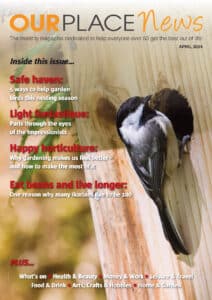Ernest Hemmingway believed that retirement was the ugliest word in the English language. His comment seems more prescient today than ever.
 Over Fifties Friends reports that the retirement process of years gone by is no longer relevant and we have to find a shape; a way of being with our work that helps us to live the life of an economic worker whilst also looking ahead to someday negotiating the smooth flight path into retirement and enjoying our post-retirement years.
Over Fifties Friends reports that the retirement process of years gone by is no longer relevant and we have to find a shape; a way of being with our work that helps us to live the life of an economic worker whilst also looking ahead to someday negotiating the smooth flight path into retirement and enjoying our post-retirement years.
The world has been changing fast and nowhere faster than in the workplace. Shifts in demography are changing the shape of our workforce and our communities. Once we had a set retirement target date, a certain age by which everyone was expected to retire. That default age boundary has been taken away in most cases. This has led to a shift of power from employer to employee. Whereas workers could expect to be terminated at the whim of an organization once they reached that ‘magic number’ of 60 or 65, this might no longer be the case. We now have the power to decide when we want to retire and on what terms. However, this doesn’t mean we shouldn’t communicate with our employers. By being open with them about what our retirement plans are, we can work with them to negotiate the best path into retirement – for us all.
We have to find a different way to transition from working into not working. How do we know when it is time to stop? And what does ‘stop’ mean? We know that we have to think deeply about it. We have to project forward; we have to plan it. Going abruptly from working full-time to not working at all is not our only option. We can plan to transition into semi-retirement before moving onto full retirement.
For example, we might cut our hours at the office to part-time hours, replacing a few of these hours with voluntary work in the community, sponsored by the company. Or we can replace some of our traditional work with mentoring duties, transferring our knowledge to the younger generation of workers at our organization. It’s about both employer and employee being innovative about the role of young people; mixing with older, wiser individuals and being creative about mature workers’ hours of work and the flexibility of their contracts.
We can afford to think as creatively and flexibly as this, because the boundaries that previously might have restricted us are gone. This is new territory for us all; this is the new age of retirement. And none of us wants to be a victim of being left behind with the previous retirement model.
(Story source: Over Fifties Friends)

